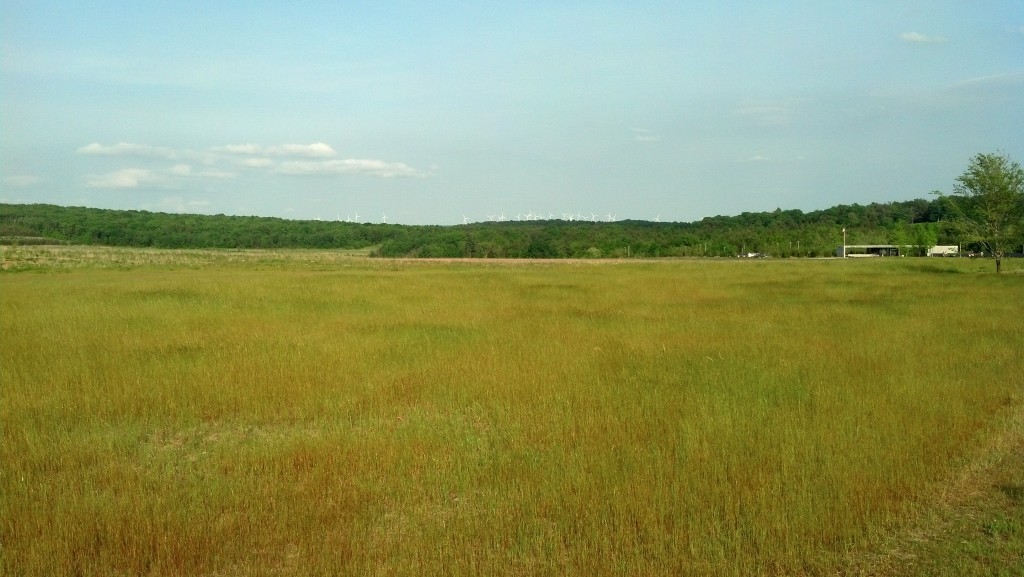
The Flight 93 memorial near Shanksville, Pa., fits in well with the natural landscape that surrounds it. (Photo by Michael E. Grass)
SHANKSVILLE, Pa. — In the immediate aftermath of the Sept. 11, 2001, terror attacks, I remember there was some confusion as to the exact location of where United Flight 93, which was heading toward Washington, D.C., had crashed. I recall some reports that it was “near Pittsburgh.” Others played it safe with a vague description as “in Pennsylvania.” Later, the pinpointed location of the crash was said to be “near Somerset.”
It didn’t really matter at the time. Most eyes were glued to television coverage of what was happening in Lower Manhattan, so the precise location of the Flight 93 crash wasn’t of major concern, except to those to may have thought momentarily that something had happened to Pittsburgh, too.
As the geographic ambiguity remained, official statements of grief and condolence poured in from around the world. I distinctly recall a few statements reacting to the horrific tragedies in New York, Washington “and Pittsburgh.”
Eventually, the chosen reference point for the remote crash site was Shanksville, a tiny borough off the Lincoln Highway in Somerset County.
In the years following the Sept. 11, 2001, attacks while on roadtrips between Michigan and Washington, D.C., I simply sped by on the Pennsylvania Turnpike. There weren’t any turnpike exits in the immediate area of where a national Flight 93 memorial would take shape, a site previously used for surface mining.
While there still isn’t convenient turnpike access to the Flight 93 memorial, it’s only about 3 miles from the Lincoln Highway, so it made sense to visit the site since I was passing through on U.S. 30.
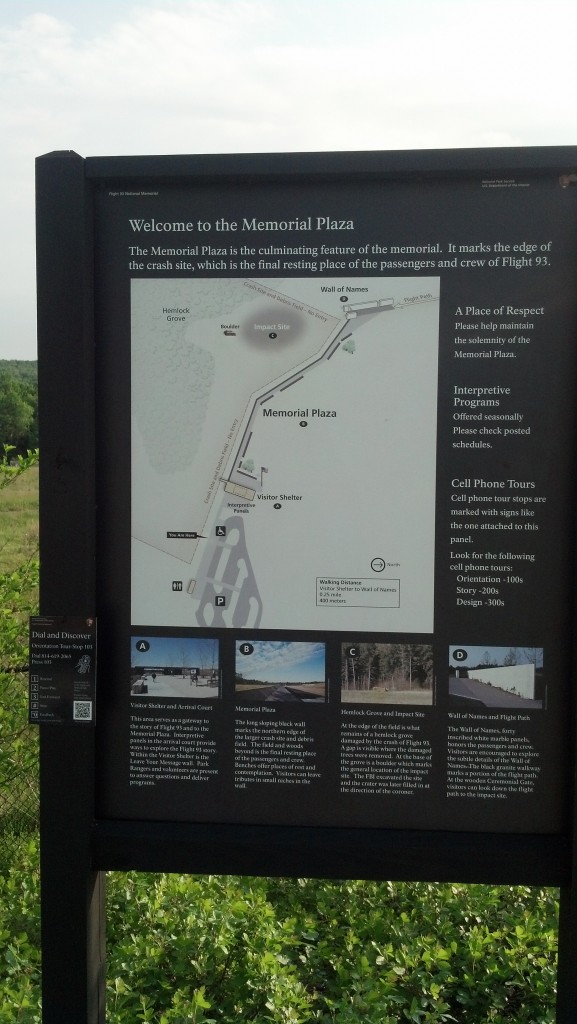
Understanding the geography of the site of the Flight 93 memorial is critical to understanding the tragedy that happened here. (Photo by Michael E. Grass)
Although I had followed the debates over the design of the World Trade Center memorial and was familiar with the design of the Pentagon’s 9/11 memorial, I don’t recall ever hearing much about the Flight 93 memorial design. My bet is that most Americans had tuned out the site near Shanksville just as I had.
So I wasn’t sure what to expect at the memorial when I approached it on the long and winding access road up from the Lincoln Highway.
When I arrived at the memorial plaza, I discovered a beautifully simple and dignified site commemorating the 40 passengers and crew members who died when the plane slammed into the ground at more than 560 mph, nearly upside down and at a 40 degree angle.
The visitor experience at this memorial is similar in some ways to the Vietnam Veterans Memorial in Washington, D.C. At both Shanksville and “The Wall” in D.C., the simple act of walking to access the sites adds to the gravity of what you must contemplate.
In the case of the Vietnam Veterans Memorial’s design, the descent to The Wall’s angle coupled with the growing height of the seemingly endless list of war dead forces you to confront the tragedy of the conflict. While the Vietnam War’s political battles were fought nearby at the White House, Pentagon and Capitol Hill, The Wall does not mark the spot where people actually died. The Flight 93 memorial does.
Post continues below …
It takes a few minutes to walk to the row of individual panels bearing the name of each victim. As you make your way along the low stone walls, you have plenty of time to process the information about the logistics of the crash displayed on information panels back at the memorial plaza. If forces you to envision what happened here.
The low walls that lead up to the memorial panels are punctuated with periodic niches where momentos, flowers and flags can be left. 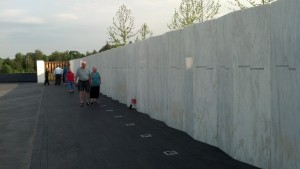 The memorial panels, with tiny gaps allowing through some of the golden light from the field behind them, stand staggered but roughly in alignment with the trajectory of the flight as it crashed into the nearby field, which remains untouched by the memorial’s physical footprint.
The memorial panels, with tiny gaps allowing through some of the golden light from the field behind them, stand staggered but roughly in alignment with the trajectory of the flight as it crashed into the nearby field, which remains untouched by the memorial’s physical footprint.
A large boulder was moved into the field to mark the impact crater as a reference point. A gate with vertical slats separates the memorial panel area from the impact site, giving the hallowed ground a sense of dignified privacy.
Post continues below …
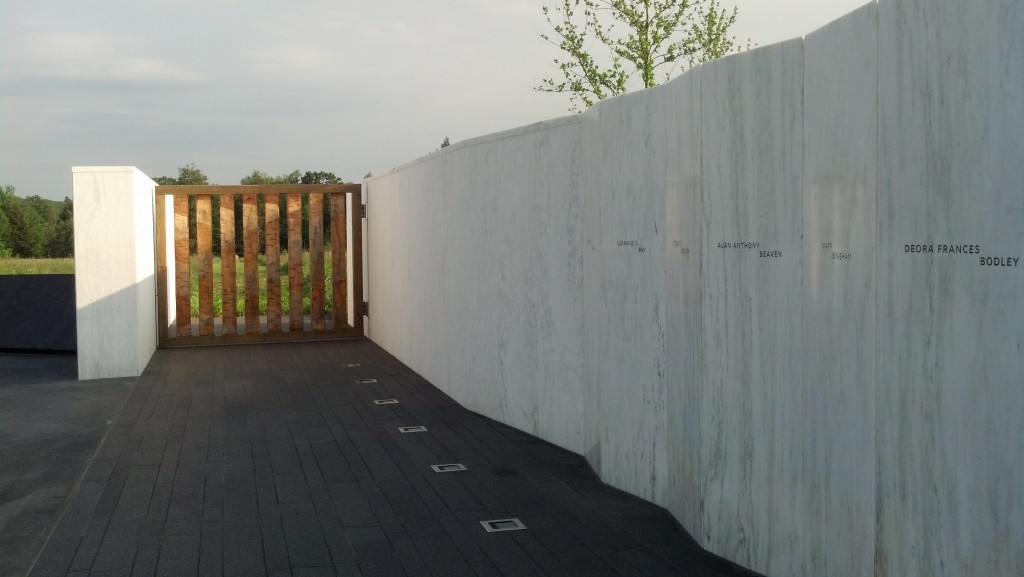
Individual panels honoring each victim are staggered but are in rough alignment with the trajectory of the plane’s path into the crash site, which is in a field behind the gate. (Photo by Michael E. Grass)
I agree with the Aug. 26, 2011, assessment by The Washington Post‘s Philip Kennicott, who wrote that of the three 9/11 sites, the Shanksville memorial “is the most minimal, most peaceful and most contemplative of the three. It makes use of the rural landscape, coaxing it into a form that inspires thoughtfulness and repose, without adding undue pomposity or sentiment. At least, not yet.”
Kennicott noted that there are plans to eventually build a bell tower. I haven’t studied the plans enough to know whether that would be a good or bad addition, but from my visit, I can safely say that what’s there currently fits in remarkably well with the natural setting.
As Kennicott put it:
The magic of the memorial is its close relationship to the dark forest of sweet gum trees, sugar maples and hemlocks that encroach on the grassy impact site of the plane.
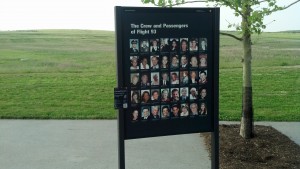
An information display on the memorial plaza features photos of the 40 passengers and crew members who died in the Flight 93 crash. (Photo by Michael E. Grass)
It’s a peaceful place. It’s very quiet. You can see the wind ripple through the blades of field grass, which toward sunset are quite warm and golden.
Overall, it’s all very harmonious, with low ridges off in the distance framing the horizon. Wind turbines can be seen in the distance to the east, but they’re far enough away to not be distracting.
Even after you leave the parking lot and make your way back to the Lincoln Highway, the contemplation continues. The road rounds its way around the low ridges and rolling fields that dominate the site, providing a beautiful vista westward. It effectively makes the landscape itself a natural extension of the physical memorial, and one that rolls on for miles.
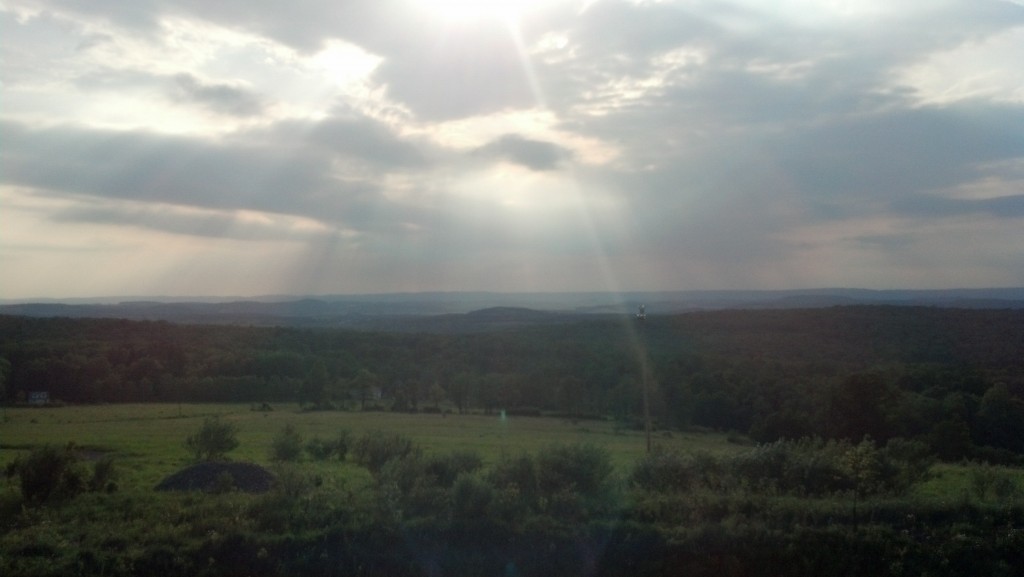
The view westward as you leave the Flight 93 memorial near Shanksville, Pa. (Photo by Michael E. Grass)

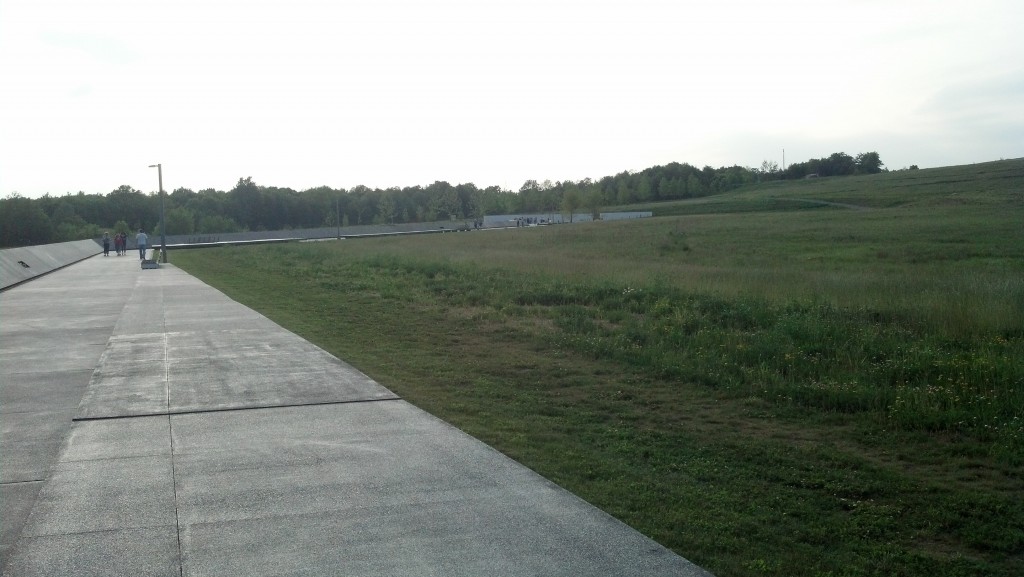
Pingback: On the Old Forbes Road And Over the Mountains | The Lincoln Highway Guide